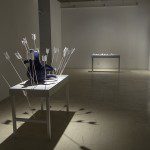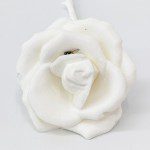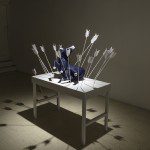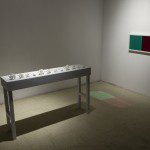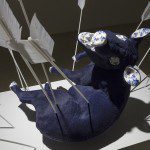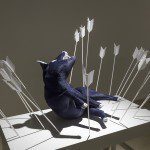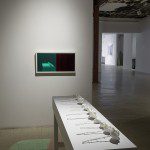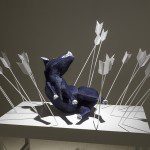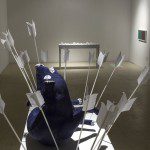Opening reception: May 4th from 3-5pm
David R. Harper: Better the Devil you Know
Text by Anaïs Castro
I am drawn to the form and idea of memorials, those markers that formalize links between memory and present experience. My main fascination is for the ways in which people bring facets of these ritual systems and objects into domestic spaces in order to amplify their personal identification with them, or perhaps with the cultures that support them. – David R. Harper
Never in history has there been such an obsession with producing sites of remembrance. We are in an era in which all information has to be recorded, preserved and catalogued; every image shared; every event commemorated. In parallel, we are in a sanitized era, where everything is polished, where nature is controlled, contained, and cleaned.
It is precisely within this perspective that the work of David R. Harper situates itself. He investigates taxidermy, a technique increasingly used by contemporary artists since the 1990s, which for him, satisfies the pleasure of controlling wildness, claims the supremacy of culture over nature, and even “celebrates an animal’s mortality while deferring our own.” Taxidermy promises the preservation of an animal’s body after it dies, but as a constant reminder of death, it is always morbid.
Better The Devil You Know, however, is not. It operates in a way as to highlight a contradiction by presenting a contained and polished, almost monumental, image of death. The many arrows that surround the animal are not without reminiscing tauromachy and confer to work a sense of theatrical drama that allows the sublimation of death. This effort to embellish mortality is an endeavour to cover up our discomfort regarding everything that infringes on our control and that brings us back to our ineluctable expiry date.
The particularity of Better The Devil You Know is that the body of the pig has been noticeably altered. Its feet, ears, eyes and mouth have been covered in Chinese porcelain, which brings quite another dimension to the work— of how taxidermy objectifies animals as decorative artefacts exhibited in people’s homes, often sold as another ‘Made in China’ commodity. The work’s reference to hunting, an impressive kill board one might say, is not to be disregarded either. In this way, Harper’s works have multiple layers of signification, and it is always up to the viewer to confer them with meaning. For this reason, one must say that David Ross Harper produces powerful sites of memorials. Because ultimately, memorials are inextricably linked to empathy: to erect a monument is to join one’s feelings to an object.


